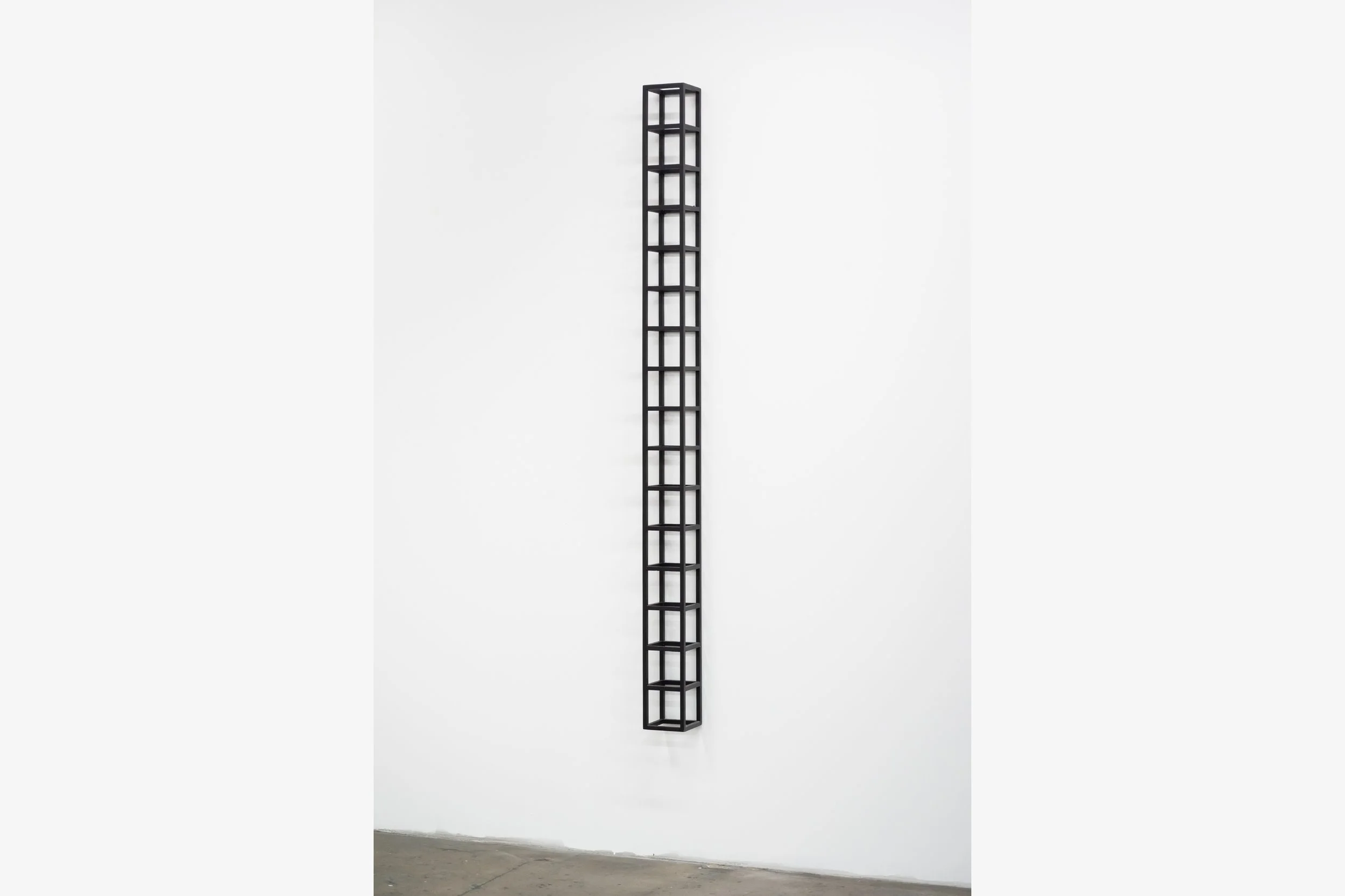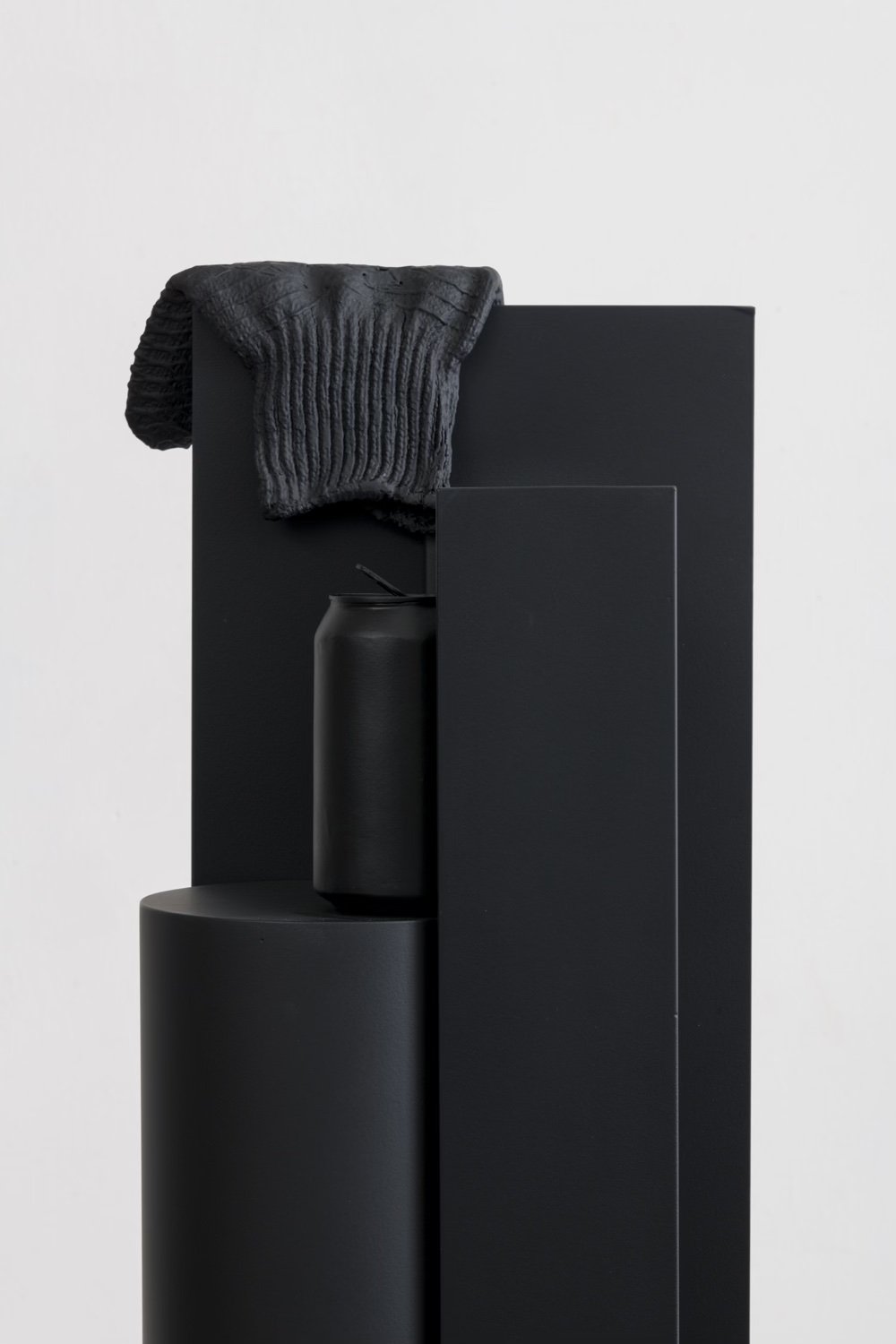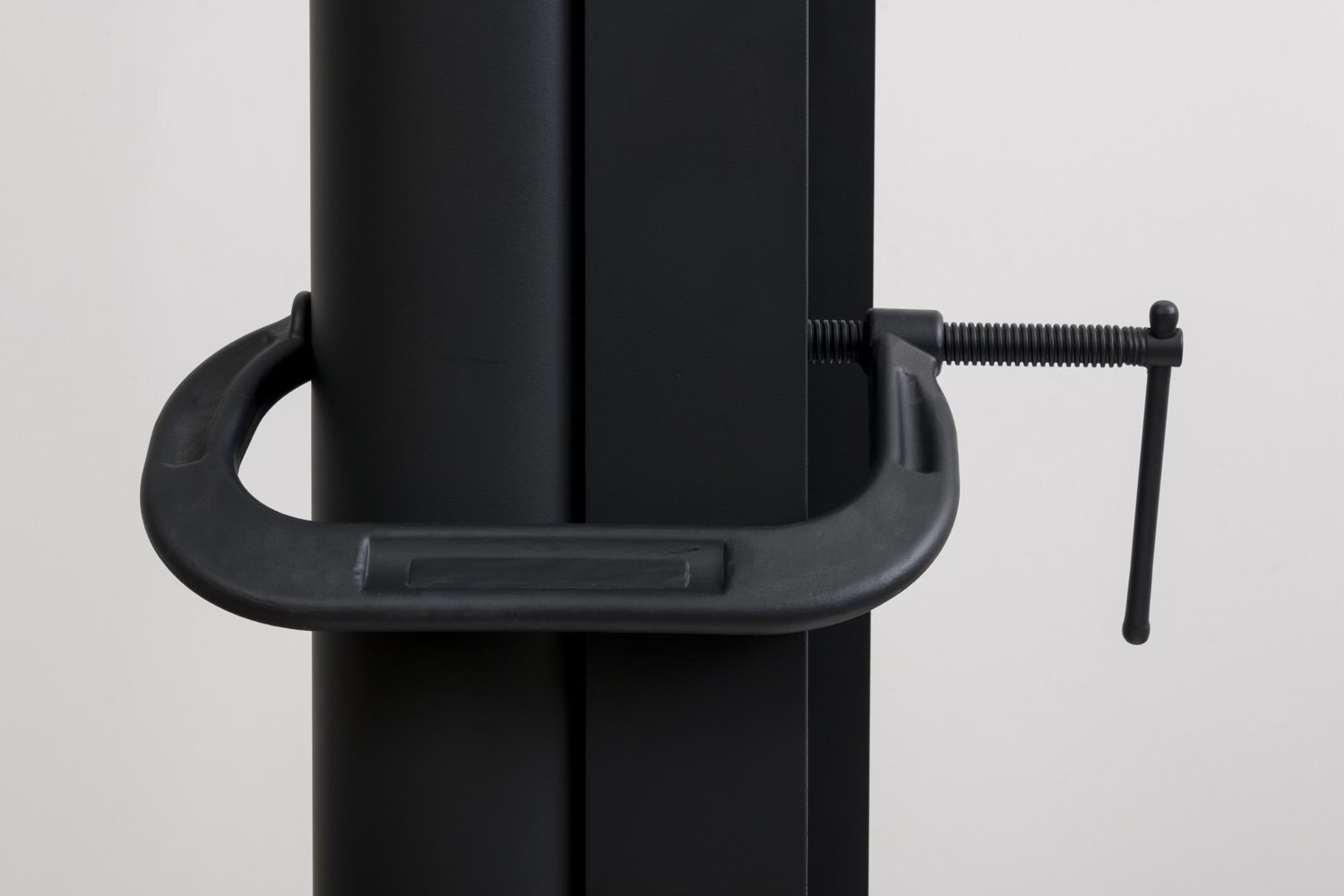Royale Projects is pleased to announce Back In Black a group exhibition featuring Knowledge Bennett, Shauna La, Sol LeWitt, Nathan Mabry, Ed Moses, Louise Nevelson, Richard Serra, Richard Shapiro, Rubén Ortiz Torres, and Liat Yossifor opening June 1, 2024 from 12 - 5pm. This exhibition was built in collaboration with top collectors, curators, gallerists, artists, and private dealers.
A sole unifier of this exhibition, black, while technically not a color, is the result from the absence or absorption of visible light and has long been explored visually and conceptually throughout art history. From the earliest of pigments, charcoal black, to carbon black and lamp black, the color has been associated with mystery, rebellion, absence, darkness, elegance, and death.
Historically, it symbolized protection throughout Egyptian history, was one of the most important colors used by ancient Greek artists in black figure pottery, and played a significant role in European art notably in Carvaggio’ use of chiaroscuro and Goya's haunting ‘Black Paintings’. A 20th century breakthrough work, Malevich’s ‘Black Square (1915)’ was the inception for the launch of his Suprematist movement. This radical minimalism influenced artists such as Ad Reinhardt and Frank Stella who both created monochromatic black series devoid of references to anything outside of the work itself.
“When I fell in love with black, it contained all color. It wasn’t a negation of color. It was an acceptance. Because black encompasses all colors. Black is the most aristocratic color of all” - Louis Nevelson
Knowledge Bennett (b. 1976 in Asbury Park, NJ) is a self-taught multi-disciplinary visual artist whose creative journey embodies a relentless pursuit of autonomy and an unwavering commitment to amplifying the power of visual storytelling.
Manifestation of the Mind (9ft) juxtaposes velvety matte black acrylic paint and shimmering diamond dust through a composition of bold diagonal stripes that gradually ascend in height. This progression visually and metaphorically communicates Ralph Waldo Emerson's profound belief that “the mind once stretched by a new idea, never returns back to its original dimensions.”
IF NOT NOW, WHEN, a part of Bennett’s Numbers Don’t Lie series, stands as a poignant testament to the unremitting significance of time. He employs numbers symbolizing letters, which combine to form the evocative phrase "IF NOT NOW, WHEN," originally attributed to the late Congressman John Robert Lewis, resounding as a resolute call to action. It encapsulates Lewis' lifelong inquiry, a rallying cry to mobilize and combat the societal challenges that beset us.
For Shauna La (b. 1983 - , Hattiesburg, Mississippi) existence is about creation, exploration and especially attuning herself to energies and frequencies that are not immediately obvious. Her process involves observing physical characteristics such as colors, sensations, tastes and smells as well as unconventional occurrences like lucid dreams or meditation. Tapping into these realms, she uses industrial materials and paint pigment to create lush, highly textured monochromatic works, that range from calm and serene to electrifying and energetic.
“My paintings represent specific moments of inner reflection and also act as reminders of the power of our intangible thought and energy to manifest into the physical realm.”
An originator of conceptual and minimalist art of the 1960s and '70s, Sol LeWitt (1928- 2007, Hartford, CT) was a pivotal figure in driving 'idea' art into the mainstream art discourse. Redefining what constituted a work of art and its genesis, he explored this philosophy through wall drawings, paintings, sculptures, works on paper and prints.
Wall Piece (16 Modules High), is a “structure” of 16 cubed modules constructed of pinewood and painted black. It is the result of a strict, predetermined logical system that excludes the factor of the artist's personality - the antithesis of the extravagantly emotional work of the abstract expressionists of the preceding generation.
Nathan Mabry (b. 1978, Durango, Colorado) is a Los Angeles artist. Formally trained as a ceramicist, his sculptures are cast from clay models and found objects. Mabry draws inspiration from a variety of sources including archaeology, Dadaism, surrealism and minimalism.
Artist tools - clamps, gloves, cans - cast by Mabry are affixed to various pipes, beams and disks painted black monochrome in Late One Night (Animus) evoking strong physical silhouettes, which explore mass, volume and scale.
The Bathers (Mercury) is one of six bronze and brass cast sculptures of upturned signposts topped with prehistoric animal skulls in Mabrys’ series that tributes Cézanne’s iconic paintings. “Resembling North American totem poles, the sculptures recall street signs of southwestern highways, and the dinosaur skulls suggested a sudden extinction.” -Jennifer S. Li, Art in America
Ed Moses (1926 - 2018, Long Beach, CA) is an American painter and central figure in the Los Angeles art scene and a key promoter of Post-War, West Coast art. Best known for his eclectic range of abstract paintings, Moses’ work is unified by his interest in transitory processes and the mutability of concepts. His work constantly shifted throughout his career, building off of the theories formulated by the pieces made before.
The rotated grid on the dynamic diagonal featured in Black Out underscores that the world is never still. The layers evoke infinite, deep space, and affirm the fact that all surfaces have depth. His use of black symbolizes earth and the reality we all inhabit.
Louise Nevelson (1899 - 1988, Pereiaslav, Ukraine), a leading sculptor of the twentieth century, pioneered site-specific and installation art with her monochromatic wood sculptures. An interest in shadow and space materialized in her first all-black assemblages, introducing a visual language that came to characterize much of her work from the mid-1950s onward.
Representing the city and its evolution of skyscrapers, Spire showcases the beginning of Nevelson’s remarkable career incorporating only pieces of wood prior to her appropriation of found objects.
Untitled incorporates found wooden forms assembled to create a lyrical composition of abstraction and intrigue. Its large scale and variety of objects is evidence of Nevelson’s painterly aesthetic inspired by Cubism.
Richard Serra (1938 - 2024, San Francisco, CA) was known as "one of his era's greatest sculptors". He became notable for emphasizing material qualities and an exploration of the relationship between the viewer, the work, and the site.
Transversal #2 and Transversal #4 echoe Serra’s monumental abstract sculptures in their immense scale. These single color etchings were created at Gemini G.E.L in 2004 and established new boundaries for printmakers.
Combining the process of aquatint and screenprinting, Composites maintain Serra’s dedication to the monochrome. While faithful to the artist’s use of all black pigment, these works offer subtle, unexpected color variations upon closer inspection.
Richard Shapiro, a lifelong devotee of the Arts, has over the years played several intertwining roles in the pursuit of his passions. He has presided over his eponymous gallery, Richard Shapiro Studiolo, specializing primarily in fine furniture and design from antiquity through the Twentieth Century and has built a reputation as a renowned interior and architectural designer. Shapiro has practiced fine art since the 1990s but after a hiatus has recently returned to a full-time practice.
Connected to Arte Povera in its experimentation with offbeat materials, “Untitled'' and “Back to Black” are made in a similar manner to furniture, where a painter's tarp is upholstered to a wood frame. The folds and creases created are reminiscent of expressionistic brush strokes transforming a trivial item into one of luxury.
Rubén Ortiz Torres’ (b. 1964 -, Mexico City, Mexico) conceptual work explores historical narratives and cultural intersections influenced by anarchy, punk, Chicanx culture, and minimalism. Currently the artist utilizes various lowrider techniques, converting aluminum panels, shopping carts, and border patrol vehicles into provocative artworks that are powerful critiques of contemporary society.
Ghost Flag presents a blacked-out American Flag, stripped of its recognizable red, white, and blue. This visual transformation challenges the viewer's perception of national identity, embodying an anarchic spirit that questions the established order and the legitimacy of symbols of power. A sister work was acquired by and is currently on view at the Smithsonian.
Liat Yossifor (b. 1974, Tel Aviv, Israel) has forged a singular trajectory in contemporary painting over the past two decades. Through a process of layering, accretion, and removal of paint, she explores the limits of visuality. Collapsing the purported duality of abstraction and figuration in painting, she embraces its nuanced, multifaceted, and often conflicting nature.
Dusk depicts amorphous black mounds of scored paint within a foreboding terrain. “Harking back to a long lineage of imagery dealing with humanity’s heart of darkness, the silent somber visions of a post-apocalyptic landscape allude to the monstrosity of violence obscured behind displays of blind patriotism and triumphant nationalism” - Susan L. Power, PhD, Independent Scholar












































